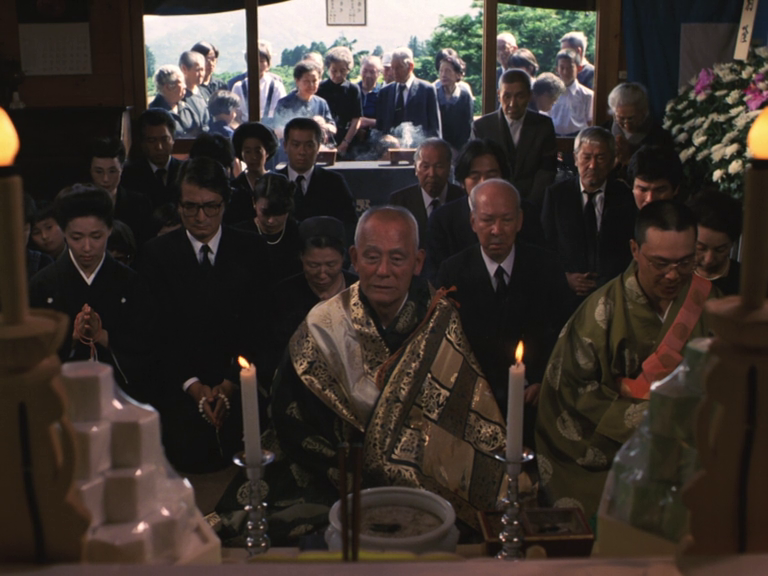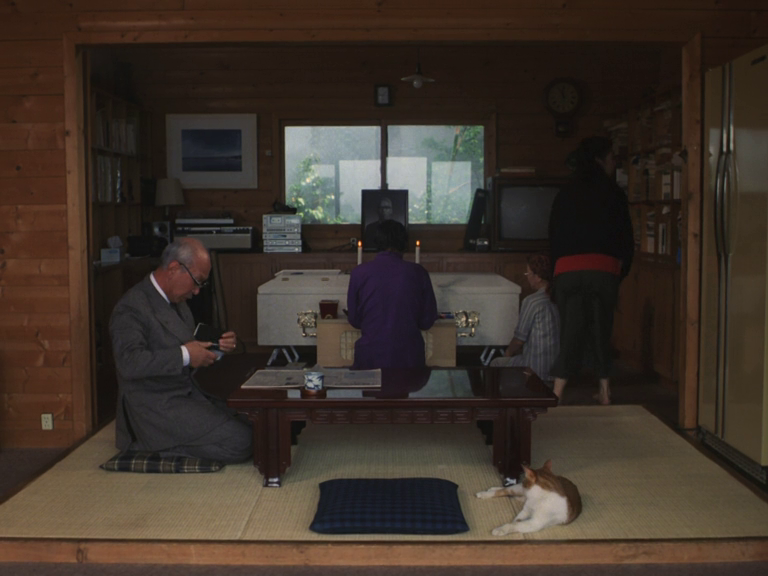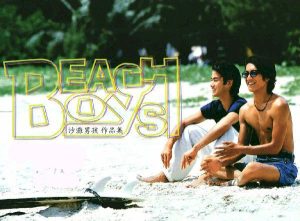A review of Juzo Itami’s directorial debut, The Funeral (1984). A playful and human look at the formalities of grieving and how we cope with death.
Note: I made a short list of recommendations for Juzo Itami little while ago which also goes into a little bit of detail about his life in general. So, if you’d like to learn a bit more about the man before hearing my thoughts on his directorial debut, have a look and then come back!
The Funeral: Synopsis and Background

The Funeral is the story of a traditional Japanese funeral, and the events that surround it. It begins with the death of Shinkichi Amamiya, with the organisation of his funeral to be undertaken by his daughter Chizuko (Nobuko Miyamota) and her husband Wabisuke Inoue (Tsutomo Yamazaki). The film follows the pair as they navigate the formalities and traditions of the grieving process, from picking up the body and transporting it home, to the wake, to the funeral itself. Chizuko and Wabisuke are not entirely sure how these things work, but do their best to make their way through it and alleviate as much stress as possible from newly widowed Kikue (Kin Sugai).
Juzo Itami decided to make The Funeral after the death of his father-in-law (the father of his wife Nobuko Miyamoto, who stars in all of Itami’s features and has a lead role in The Funeral). The script for the film was written with the aid of noted down memories of that funeral, and Itami was said to have remarked during that funeral that it felt like he was in an Ozu film.1 For both his wife and their son Manpei, who also has a role in The Funeral (as Jiro, one of Wabisuke and Chuzuko’s young sons), the filmed funeral sticks in their minds much more vividly than the real-life funeral on which it was based.2 Watching The Funeral today, it is not hard to understand why. The film very naturally and playfully captures those small moments of humanity that punctuate the formalities of a funeral, and basks in the contradictions and peculiarities that make life so endlessly and enduringly interesting and memorable.
Contradictions in Life and Death

The film begins with one such contradiction, as Wabisuke Inoue delivers voice-over narration of his father-in-law Shinkichi’s final moments. Having visited the doctor in Tokyo, Shinkichi returns to his house in the countryside with a brown paper bag filled with extravagant foods from the supermarket, and a clean bill of health from the doctor. He messily demolishes eel and avocados, drinks heartily, and talks to his wife about living to 120. Later that night, he begins to suffer a heart attack and is taken to hospital, where he eventually dies. Mere hours after being medically deemed to be in excellent health, and making plans to live for decades more, Shinkichi is dead. Such is life…
Dying almost immediately following a clean bill of health isn’t the only contradiction in the film, it’s merely the first. Wabisuke is an actor, very much used to “performing”, but fears having to give a speech during the funeral proceedings. The undertaker is very well versed in ancient Japanese funereal customs and is pressed for guidance by the Inoues at every opportunity, but is himself the very picture of international modernity with his beret, sunglasses, and white leather shoes. The head monk similarities harkens back to a long-forgotten time as he performs ceremonial rituals for the family in his traditional robes. He seems quite a simple and austere man on the surface, but that ascetic ideal often associated with monks is betrayed by his arrival to the Inoue’s home in a fancy car, and his attraction to an artisanal table crafted from French tile. It’s little character details like this that help bring The Funeral to life, and give its fairly simple story a rich and enjoyable depth.
Formality and Spontaneity

The Criterion release of The Funeral is presented in full-screen 4:3/1.33:1, and the colours look fantastic. The wake and much of the action of the film take place in Shinkichi and Kikue’s home in the countryside, and the film’s palette, with its earthy, robust browns and vivid, inviting greens, helps to lend the space an appealing and comfortable air. There’s even a cat, Yankichi, who made the trip from Tokyo with the family into the countryside and is seen lounging around the house, adding even further to its cosiness.

The Funeral is an excellent contemplation on the rituals of death. How the formalities of the funeral and everything surrounding it help ground the living and keep us busy, giving us direction and little parts to play and act out as we try and deal with something life-changing and emotionally painful. How there’s a whole host of considerations to make when you’re planning it out and executing it, lots of things to learn so that you can keep things moving along and get through it in one piece. But, within all that formality, there are those spontaneous moments of humanity that are impossible to suppress, and it’s those moments that help give this film its substantial warmth.
There’s a moment in the film where Wabisuke gathers his young sons and nephews around Shinkichi’s coffin and the temporary shrine built in front of it in the home’s living room, and instructs them on the correct use of incense sticks for prayer. He tells them to use either one or three sticks, light them on the candles on the shrine, and fan out the flames with your hands (“never blow them out!”) before placing them upright into the holder in front of the coffin. He demonstrates all this to the boys, before letting them have a turn themselves, who join in with great enthusiasm. Every single one of them, including Wabisuke, takes three sticks each. Why do none of them only take one, which is also an acceptable option? To me, it emphasises the boys’ enthusiasm, that they’re all excited to be learning and doing something new, and to be spending time with each other. The reason they all choose to use three is because three is more than one, and more sticks means time to enjoy experiencing something new with your loved ones. It also means more chance to show respect for your departed grandfather, and more practice at getting it right. Of course, it may actually mean nothing and I’m inventing meaning where none exists, but even if it’s just a reflex action it shows at the very least that the boys were enjoying paying their respects. To me, that shows a great deal even on its own.

Final Thoughts
Overall, The Funeral is a lovely, human film, and propelled along by its eclectic cast of characters and little details. Although it is a film about grieving and has the death of a loved one at the heart of its story, I find the film to actually be incredibly comforting. It highlights the importance of community, of those unshakeable familial bonds we build up over a lifetime, and it takes an immense joy in the peculiarities of every-day life. There are also moments of what can only be described as batshit lunacy, and what’s life without a dash of insanity every now and then?
The Funeral is an assured start to an all-too-short directorial career, and the Criterion release is replete with some very nice extras including a selection of adverts Itami directed for Ichiroku Tarts (one of the main financial backers of The Funeral). If you enjoyed Tampopo (Juzo Itami, 1985), or like Japanese cinema or human drama in general, then The Funeral is for you.
9/10











